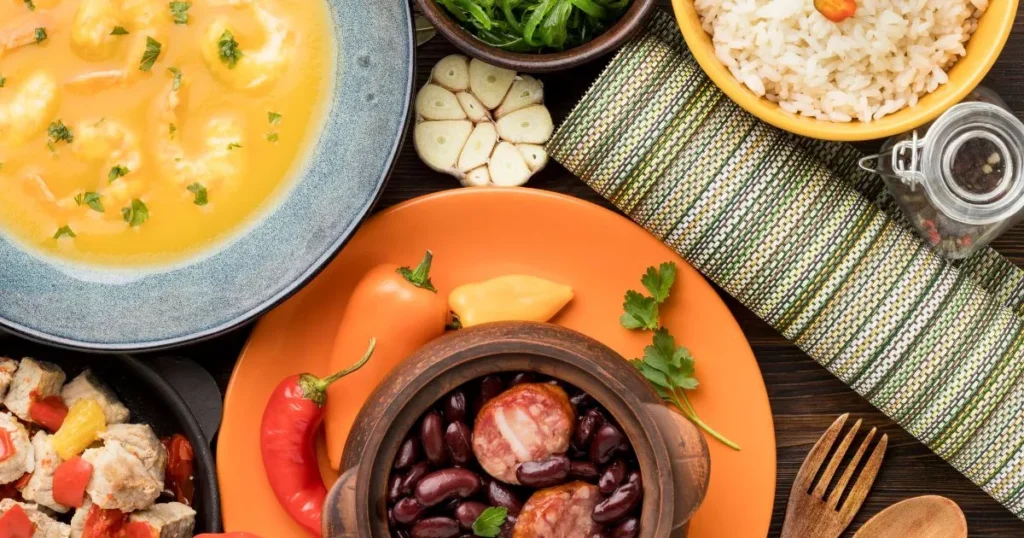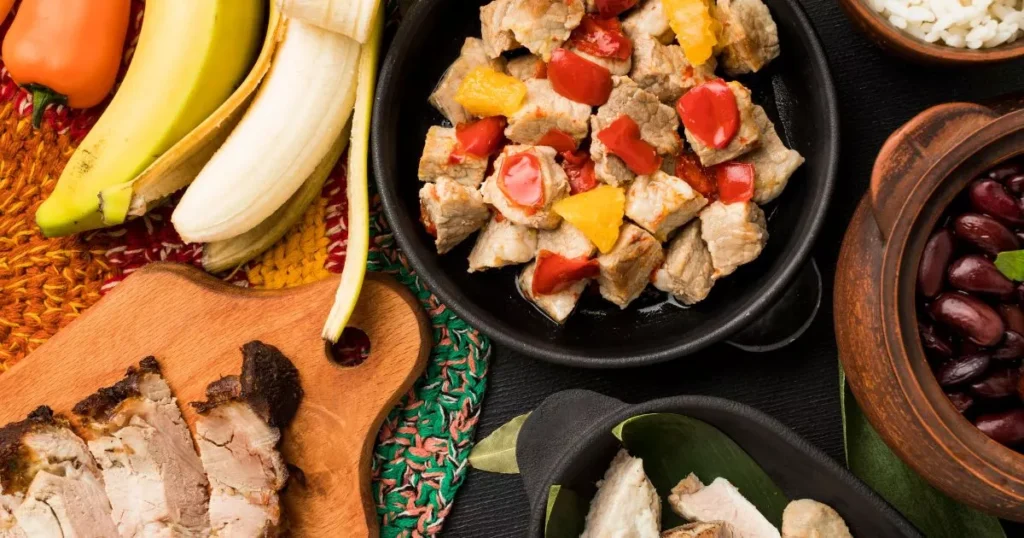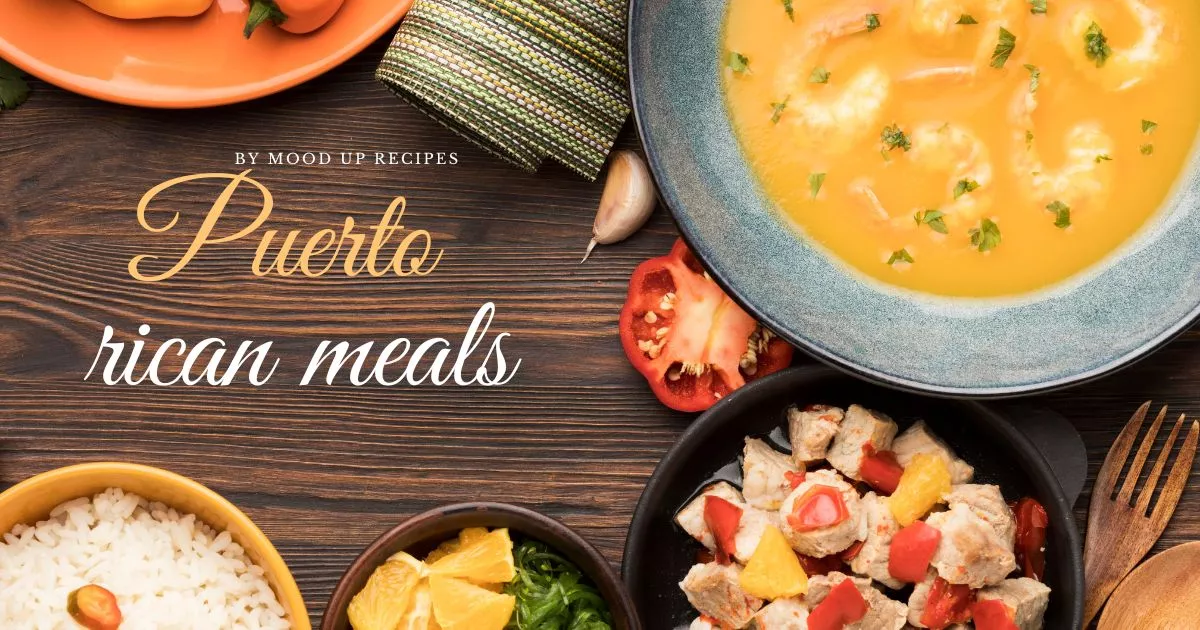Imagine stepping into a vibrant kitchen filled with the rich aroma of spices, simmering meats, and freshly cooked rice. Each dish tells a story, reflecting the island’s diverse culture and heritage. Puerto Rican meals are not just about food; they represent family gatherings, celebrations, and a deep connection to the land. Whether you’re a seasoned traveler or someone looking to explore new cuisines, Puerto Rican meals offer a unique culinary experience that captivates the senses. Join me as we embark on a journey through traditional dishes that embody the heart and soul of Puerto Rico.
Table of Contents
Understanding Puerto Rican Cuisine

A Melting Pot of Flavors
When you think of Puerto Rican meals, envision a vibrant tapestry of influences. The island’s cuisine is a delightful blend of Taíno, African, and Spanish cultures. Each group has contributed unique flavors and techniques, resulting in dishes that are both complex and comforting.
- Taíno Influence: The indigenous people of Puerto Rico introduced staples like cassava and sweet potatoes, which remain integral to many dishes.
- African Roots: Enslaved Africans brought various cooking methods and ingredients, including plantains and okra, enriching the island’s culinary landscape.
- Spanish Heritage: Spanish colonization introduced spices, rice, and meats, which are now foundational to traditional Puerto Rican meals.
This fusion creates a rich culinary experience that is both diverse and deeply rooted in history. Understanding this background enhances your appreciation of the flavors and traditions behind each dish.
Must-Try Traditional Puerto Rican Meals
1. Arroz con Gandules
What is it?
Arroz con Gandules is Puerto Rico’s national dish, a savory rice dish made with pigeon peas and seasoned with sofrito—a blend of herbs, spices, and vegetables that forms the backbone of many Puerto Rican recipes.
Key Ingredients:
- Long-grain rice
- Pigeon peas (gandules)
- Sofrito
- Pork (optional)
- Olive oil
Why You Should Try It:
The harmonious blend of flavors and textures makes this dish a comfort food staple. It’s perfect for family gatherings and celebrations, often served alongside roasted pork or chicken.
2. Mofongo
What is it?
Mofongo is a dish made from fried green plantains that are mashed with garlic, olive oil, and pork cracklings (chicharrón). This dish can be served as a base for various meats or seafood.
Key Ingredients:
- Green plantains
- Garlic
- Chicharrón
- Olive oil
- Broth (for moisture)
Why You Should Try It:
The combination of crispy and creamy textures makes mofongo a unique culinary experience. It’s versatile and can be topped with shrimp, chicken, or vegetables, making it suitable for various dietary preferences.
3. Pernil
What is it?
Pernil is a slow-roasted marinated pork shoulder, often served during festive occasions. The meat is typically seasoned with garlic, oregano, and adobo, resulting in a flavorful and tender dish.
Key Ingredients:
- Pork shoulder
- Garlic
- Oregano
- Adobo seasoning
- Olive oil
Why You Should Try It:
The crispy skin combined with the tender meat creates a mouthwatering experience. Pernil is often served with rice and beans, making it a hearty meal perfect for celebrations.
4. Tostones
What are they?
Tostones are green plantains that are fried two times, making them crunchy on the outside and tender on the inside. They are often served as a side dish or snack, accompanied by garlic dipping sauce.
Key Ingredients:
- Green plantains
- Garlic
- Oil for frying
- Salt
Why You Should Try It:
These crunchy delights are perfect for sharing and make an excellent appetizer or side. Their versatility means they can be enjoyed plain or topped with various ingredients.
5. Flan
What is it?
Flan is a creamy caramel custard dessert that is a beloved staple in Puerto Rican households. It is made with eggs, sweetened condensed milk, and sugar, resulting in a sweet and silky treat.
Key Ingredients:
- Eggs
- Sweetened condensed milk
- Evaporated milk
- Sugar (for caramel)
Why You Should Try It:
Flan’s smooth texture and rich flavor make it an irresistible dessert option. It’s often the highlight of family meals and celebrations, bringing a sweet end to any feast.
Cooking Puerto Rican Meals at Home

Essential Ingredients to Stock
To recreate these delicious dishes at home, consider stocking your pantry with the following essential ingredients:
| Ingredient | Description |
|---|---|
| Sofrito | A blend of herbs and spices for flavoring |
| Adobo seasoning | A versatile seasoning mix |
| Pigeon peas | A staple in many rice dishes |
| Green plantains | Key for making mofongo and tostones |
| Garlic | A fundamental flavor enhancer |
| Olive oil | Common cooking oil in Puerto Rican cuisine |
Simple Recipe: Arroz con Gandules
Here’s a quick recipe to get you started:
Ingredients:
- 2 cups long-grain rice
- 1 can pigeon peas (drained)
- 1 cup sofrito
- 2 cups chicken broth
- ½ lb pork (optional)
- Salt and pepper to taste
Instructions:
- In a large pot, heat olive oil and sauté the sofrito until fragrant.
- If using, add pork and cook until browned.
- Stir in the pigeon peas, rice, chicken broth, salt, and pepper.
- Boil the mixture, then lower the heat and cover it. Cook until rice is tender.
- Fluff with a fork and serve!
FAQ About Puerto Rican Meals
What is the most popular Puerto Rican meal?
The most popular meal is Arroz con Gandules, often considered the national dish of Puerto Rico.
Are Puerto Rican meals spicy?
Although some meals are spicy, Puerto Rican food mainly emphasizes savory and sweet tastes instead of heat.
Can I find Puerto Rican meals in the U.S.?
Yes, many cities have Puerto Rican restaurants where you can enjoy traditional meals.
How do I make mofongo vegan?
Replace chicharrón with sautéed vegetables or mushrooms, and use vegetable broth for moisture.
Conclusion
Puerto Rican meals are a celebration of culture, flavor, and tradition. Each dish offers a glimpse into the island’s rich history and diverse influences, making it an essential culinary experience for anyone who loves food. Whether you try cooking these dishes at home or enjoy them in a local restaurant, you’ll find that Puerto Rican cuisine is not just about nourishment; it’s about connection, celebration, and comfort.
Don’t hesitate to dive into these traditional dishes and explore the vibrant flavors of Puerto Rico. Share your cooking experiences or favorite dishes in the comments below, and let’s keep the conversation going!
